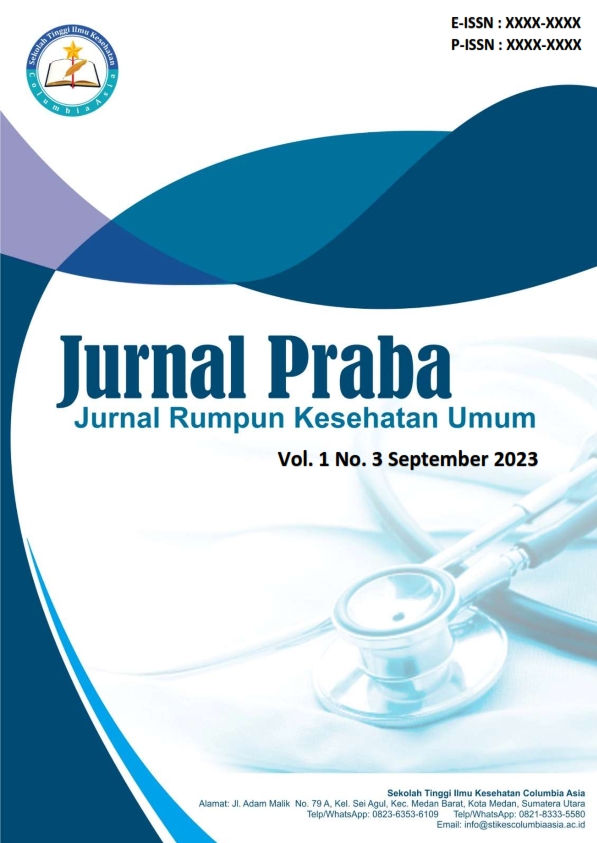Pengembangan Ubi Jalar (Ipomoea Batatas) Sebagai Bahan Baku Olahan Pasta Gnocchi
DOI:
https://doi.org/10.62027/praba.v3i3.575Keywords:
Sweet Potato, Sweet Potato Flour, Gnocchi PastaAbstract
This study aims to develop sweet potatoes (Ipomoea batatas) as an alternative raw material for producing Gnocchi pasta by processing them into flour and formulating pasta based on local food ingredients. This innovation is intended to increase the added value of sweet potatoes and support food diversification in the community. The research employed a Research and Development (R&D) approach through stages of identifying potentials, collecting data, designing products, validating designs, revising designs, testing products, developing the final product, and conducting limited production. The study was carried out over three months at the Culinary Arts Laboratory of Universitas Negeri Manado. The results show that the sweet potato flour produced through peeling, slicing, heat processing, drying, milling, and sieving generated high-quality flour with a natural purple color and fine texture suitable for Gnocchi production. The formulated Gnocchi made from sweet potato flour exhibited color, aroma, taste, and texture characteristics that were well-received by panelists. Nutritional analysis conducted by the Industrial Research and Standardization Center of Manado revealed that sweet potato Gnocchi contains 55 g of moisture, 28 g of carbohydrates, 6 g of sugar, 3 g of dietary fiber, 2.5 g of protein, 1.2 g of total fat, and 200–300 mg of natural anthocyanins per 100 g. These components indicate that the product has the potential to be developed as a functional food. This study concludes that sweet potatoes have great potential to be developed as raw material for modern pasta products such as Gnocchi due to their favorable physical and chemical properties. In addition, the utilization of local ingredients supports national food diversification efforts, the development of creative culinary industries, and business opportunities for ready-to-cook and ready-to-eat food products.
References
(Disusun menggunakan gaya penulisan ilmiah dan sumber relevan terkait ubi jalar, pangan lokal, dan pembuatan pasta)
Aini, N., & Wahyuni, S. (2020). Karakteristik Tepung Ubi Jalar Ungu sebagai Bahan Pangan Alternatif. Jurnal Pangan dan Gizi, 15(2), 112–120.
Astawan, M. (2016). Sehat dengan Antioksidan Alami. Jakarta: Gramedia Pustaka Utama.
Borg, W. R., & Gall, M. D. (1989). Educational Research: An Introduction (5th ed.). New York: Longman.
Fitriani, R., & Andini, D. (2021). Kajian Kandungan Antosianin pada Ubi Jalar Ungu dan Potensinya sebagai Pangan Fungsional. Jurnal Teknologi Hasil Pertanian, 14(1), 45–54.
Indriani, H., & Purwaningsih, S. (2019). Diversifikasi Pangan Berbasis Sumber Daya Lokal. Jurnal Pangan Nusantara, 3(1), 25–34.
Kusnandar, F. (2017). Ilmu Pangan: Komponen dan Karakteristik Bahan Pangan. Jakarta: Dian Rakyat.
Nugraha, D. (2018). Pengembangan Produk Pasta Berbahan Pangan Lokal. Jurnal Tata Boga Indonesia, 5(3), 201–210.
Purwandari, U., et al. (2014). Effect of Sweet Potato Flour on Quality Characteristics of Gluten-Free Pasta. Food Science and Technology, 55(4), 998–1005.
Sari, Y. R., & Pranata, I. G. (2020). Pemanfaatan Tepung Ubi Jalar sebagai Substitusi Tepung Terigu pada Produk Olahan. Jurnal Gizi dan Pangan Lokal, 8(2), 77–85.
Winarno, F. G. (2015). Kimia Pangan dan Gizi. Jakarta: Gramedia.
Yuliani, N. (2019). Proses Pembuatan Gnocchi dan Peluang Pengembangan Bahan Baku Lokal. Jurnal Kuliner Nusantara, 2(2), 88–97.
Zhao, H., & Duan, W. (2018). Anthocyanin Stability and Its Food Application. Journal of Functional Foods, 40, 240–251.
Downloads
Published
How to Cite
Issue
Section
License
Copyright (c) 2025 Jurnal Praba : Jurnal Rumpun Kesehatan Umum

This work is licensed under a Creative Commons Attribution-ShareAlike 4.0 International License.







